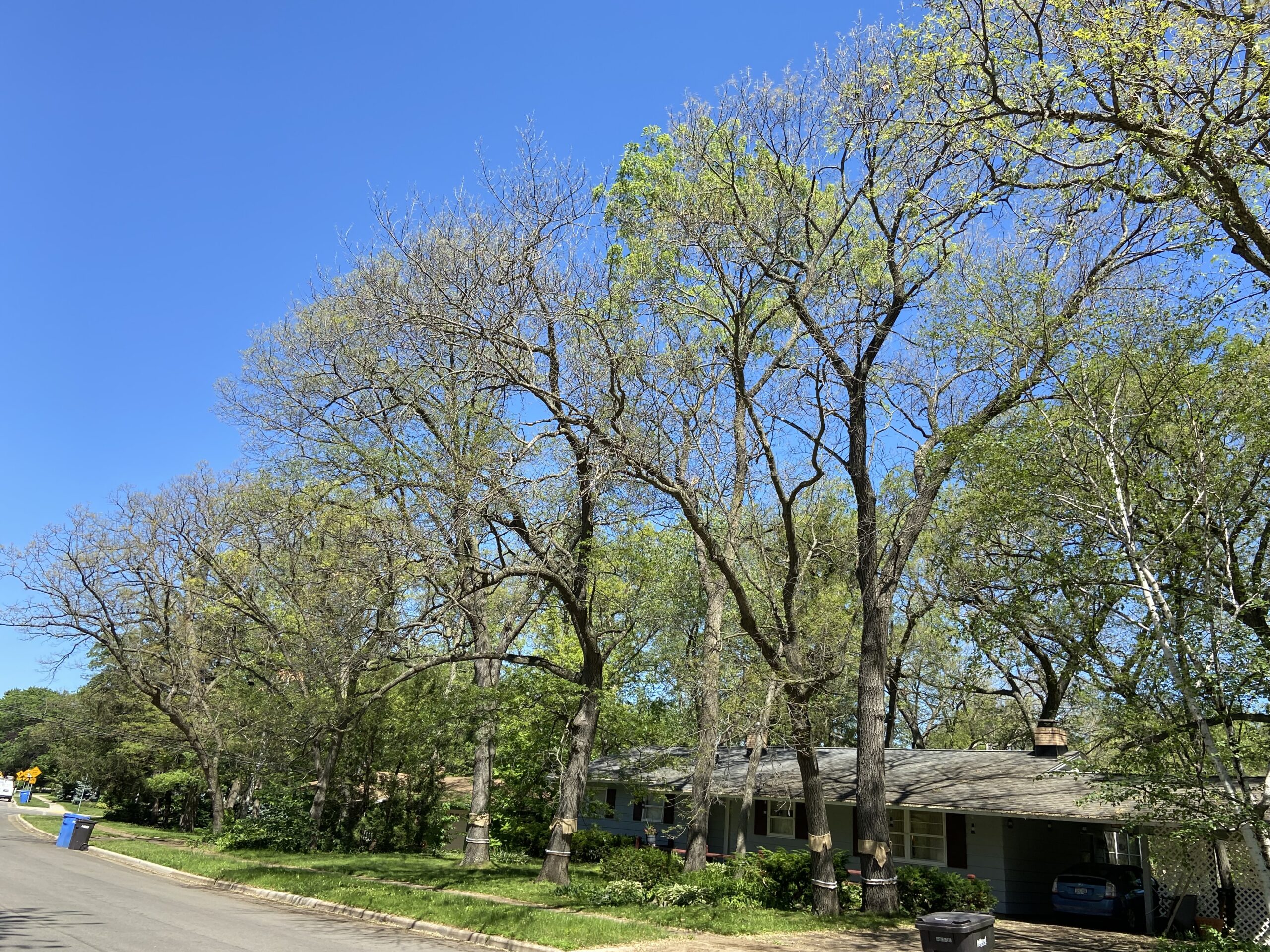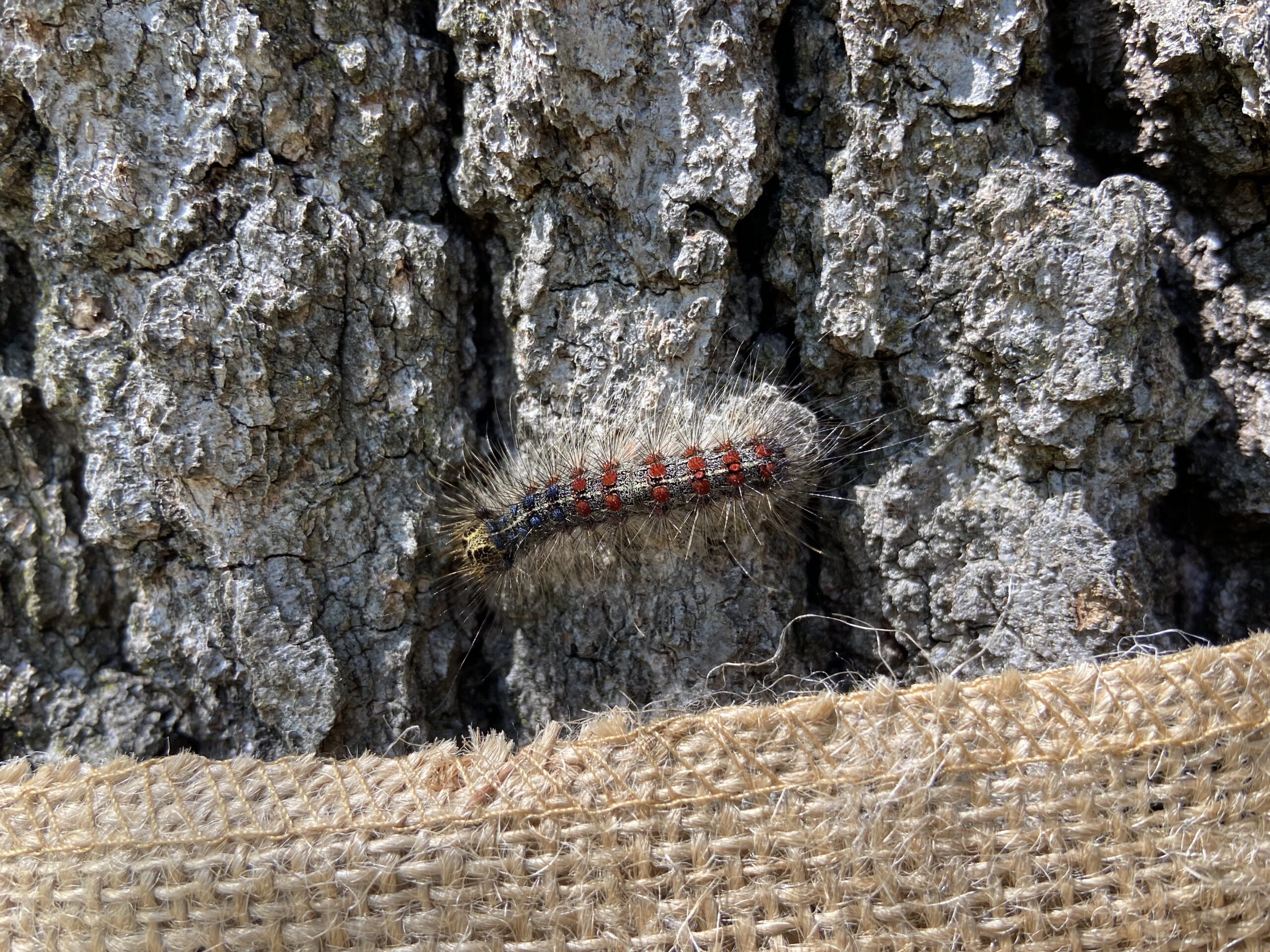By Andrea Diss-Torrance, Invasive Insects Program Coordinator, Madison, Andrea.DissTorrance.wisconsin.gov
Spongy moth* (formerly known as gypsy moth) populations are entering an outbreak phase in southern Wisconsin due to last year’s dry, hot weather. This pest is rising most rapidly in oak-dominated areas, especially in landscaped spaces with turf and high human activity (i.e., parks, picnic areas, campgrounds and yards). This open ground and human disturbance deter spongy moth’s predators and diseases.

Oak trees are more vulnerable to defoliation in disturbance-heavy environments. These oak trees in Middleton, Wisconsin are facing heavy defoliation by spongy moth. Photo: Wisconsin DNR
Populations increase more slowly in woodlands with thick ground cover, but we could see wider scale defoliation next year if disease doesn’t hit spongy moth this season. Both fungal and viral diseases have been spotted affecting spongy moth caterpillars, but wide-scale mortality has not yet developed.
As of mid-June, scattered spots of defoliation were reported in south and south-central Wisconsin. An aerial survey will be done once feeding is completed in late-June to early-July to map the extent of moderate to severe defoliation.
After defoliation, most trees will put out a second set of leaves in July. The replacement foliage may be lighter in color and less dense. Homeowners and property managers should note the following:
- Most trees will recover, so don’t rush to cut defoliated trees. Defoliation is a stressor, but a previously healthy tree will likely be able to recover.
- Ensure trees around buildings get enough water for the rest of the summer. If we don’t get a rain soaking each week through the end of September, run a sprinkler under each tree for about an hour.
- Don’t fertilize yard trees or the grass or plants below them with a nitrogen fertilizer. This could encourage too much leaf growth and exhaust the tree, resulting in its death next spring.
- In woodlots, avoid thinning defoliated stands this year and next. The combined stress can result in heavy mortality.
- Report observations of heavy defoliation to your regional forest health specialist.
In the next two summers, watch for branches dying back on heavily defoliated oaks. Defoliation will slow down oak growth and leave them vulnerable to attack from the native twolined chestnut borer. The larva of the borer feeds under the bark of branches and girdles them, causing the leaves on that branch to wilt and die but remain hanging on the tree. This distinguishes twolined chestnut borer from oak wilt, which causes leaves to partly brown and fall, progressing from the top of the tree to the lower part of the canopy until the entire tree is bare.
Twolined chestnut borer can be managed in yard trees by removing dying branches, taking oak wilt precautions and destroying twolined chestnut borer larvae to ensure adults don’t emerge. Arborists may treat oaks with insecticides that will protect them from twolined chestnut borer attack, but these treatments are only practical for yard trees, not woodlands. See more on management options here.
*A new common name for Lymantria dispar, spongy moth, replaced the prior name of this insect, gypsy moth, in 2022. This change was necessary because the word ‘gypsy’ is an ethnic slur and the former common name equated people with insects. For more information, visit the Entomological Society of America website.

